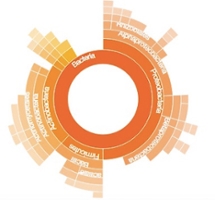
Author: Robert Schlaberg

Despite advances in medical care, half of all young children in the United States who come down with pneumonia wind up in the hospital. It is notoriously difficult to identify the cause of this potentially dangerous condition. As a result, one-quarter of the cases remain undiagnosed. Without an accurate diagnosis, doctors run the risk of not providing patients with the best medical treatment.
Robert Schlaberg, M.D., an assistant professor of pathology and medical director at ARUP Labs, led a study testing whether two new diagnostic tools could find the culprits behind difficult-to-diagnose cases. As part of a multicenter investigation, he and his colleagues applied the new tools to nasal and throat swabs from children hospitalized with the most common form of pneumonia, community acquired pneumonia (CAP).

Previous approaches fished through dozens of individual viral species for the culprit of the infection. The new approaches cast a wider net. Shotgun metagenomics sequencing revealed all DNA or RNA in a patient’s sample. Further analysis with software called Taxonmer matched the genetic material to species, genus, and family of virus or bacteria. A second technique, Panviral group (PVG) polymerase chain reaction (PCR) expanded on existing diagnostic tests by looking more broadly for characteristics common to all members of different viral families.
Using the two new tests, the scientists detected pathogens in one-third of the undiagnosed children. In particular, human bocavirus was found in many of the samples, suggesting it may be an unrecognized cause of childhood pneumonia. The work showed that broad-spectrum tests could be a sound strategy for exposing infectious pathogens that remain hidden from today’s diagnostic panels.